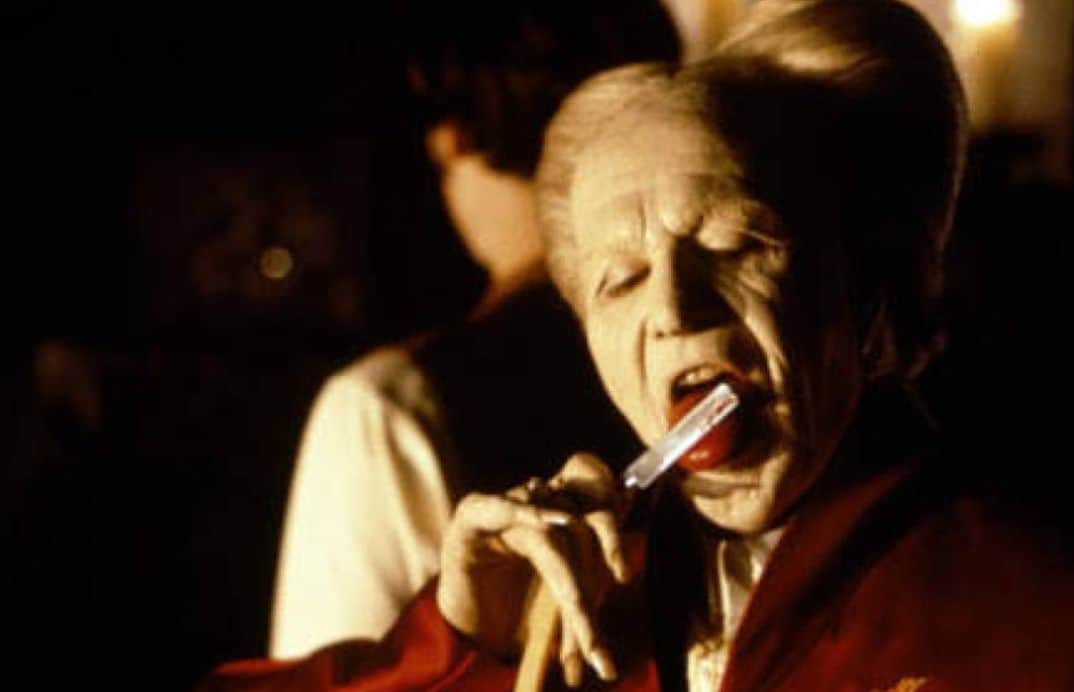In 1725, several murders took place in the Serbian village of Kisolova. It was not the first time that a vampire story like this had come to court from the eastern limits of the Habsburg empire. The imperial medical officer Frombald recounted in his report how, according to testimonies worthy of the greatest credit, they removed a headstone and found the body of Peter Plogojowitz, a peasant, soaked in blood. His eyes were open and fixed, his cheeks were rosy, and there was no rigour mortis on his limbs. According to the tombstone he had been dead for ten days. According to the people, he had killed nine people since then.
Military doctors gathered testimonies, read manuals of demonology and anatomy, and were convinced that the story was true. People of the highest credit, such as students and the military, claimed to have seen with their own eyes how, after driving a stake into the vampire’s heart, a stream of blood gushed out of the wound and from the eyes, ears and mouth of the dead man “Blood was coming out of all his pores as if he were swollen and satiated.” The report that returned to court claimed that the vampire was real, and explained how the corpse was torn to pieces and burned to prevent it from attacking people again.
The fascination with the powers of blood was not new when vampires made their appearance in the military reports of the Habsburg Empire. Anthropologists had collected cases of reverence and horror before blood, shed by violence or spilled with menstruation, in ancient towns from all corners of the map. But the discovery of blood circulation aroused an illustrated fascination with this vital fluid and turned our way of understanding the world upside down. He also created new myths for him.
The Count de Cabreras, captain of the Alandetti infantry regiment, faced a case similar to that of Plogojowitz in 1730 and ended up becoming an expert vampire hunter. It all started when the dead father of a peasant appeared at the home of a landowner, and he died. When the news reached Cabreras, he went there with several officers, a surgeon and a notary, with whom he exhumed the body of the suspect. Again, he was fresh and his blood was liquid, like that of a living person. He ordered the body beheaded, and Emperor Charles VI of Habsburg sent officers, lawyers, doctors, and theologians to confirm the case. Thus, the acts of the captain received state legitimacy.
These are the first two recorded episodes of the existence of vampires as we read in Nick Groom’s ‘ The Vampire: A New Story’, published by the Desperta Ferro publishing house, whose catalog is a bottomless pit for the enjoyment and curiosity of fans of history books. Groom’s work is meticulous: it is filled to the brim with blood, macabre scenes, monstrosity, and scholarly interpretations. Groom (who incidentally has a vampire surname) offers us a tour in the footsteps of a monster that for years believed to be real and that later fed the pit of literature, theatre, art, cinema and politics.
Hybrids of myth and empirical science
Vampires were born in the narrow, shadowy alley between two worlds: folk superstition and Enlightenment medical science. Unlike other monstrous shadows capable of terrorizing people and turning innocents into scapegoats, such as the witch, the devil, or the wraith, the vampire was a monster of rationalist thought and industrial society. A dark fantasy that arose on the borders of the East and that became a scientific mystery and reason for controversy, about which thinkers of the stature of Voltaire or Rousseau would end up pronouncing themselves.
The symptoms of vampirism were collected in medical treatises. “Tremors, persistent nausea, pain in the stomach and intestines, (…) glazed eyes, deafness and speech problems. (…) Paroxysm manifests itself in extreme night terrors, associated with howling, strong shaking, a spasmodic contraction of the muscles of the upper body. (…) Finally, nightmares (incubus) appear, which frequently evoke the image of the return of the dead”.
Between 1732 and 1733 twelve books and four dissertations on vampirism were published. In the following three years, twenty-two more academic treatises, in European intellectual centres such as Amsterdam, Halle, Jena, Leipzig and Vienna. During the following years, famous doctors, philosophers and theologians hotly debated for or against these returnees from the grave. Catholics and Protestants accommodated in different ways the possibility that there were devilish ” revegents” returning from the cemetery, while public opinion drank litres of blood.
With time, the existence of real vampires was refuted, but there were always conspiranoids who found evidence everywhere: the trail of looted tombs, accusations and strange epidemics attributed to the presence of the “nosferatu’s” is long and is lost in the century XIX. The vampire also became a political idea that intensified in the 20th century after the tremendous success of Bram Stoker’s novel. Marx filled his texts with capitalist vampires and the Nazis with Jewish vampires: the sinister and powerful bloodsucker reaches, in similar ways, even the cases of Spanish corruption.
Groom’s book is a fascinating and nutritious read also for intellectual and morbid reasons. He entertains with his bloody profusion of sublime and repulsive scenes but also shows that the vampire has been, above all else, a lever-figure that has helped to think. And it also gives food for thought now, at times like this, when the invisible vampire of the virus once again haunts our homes.
